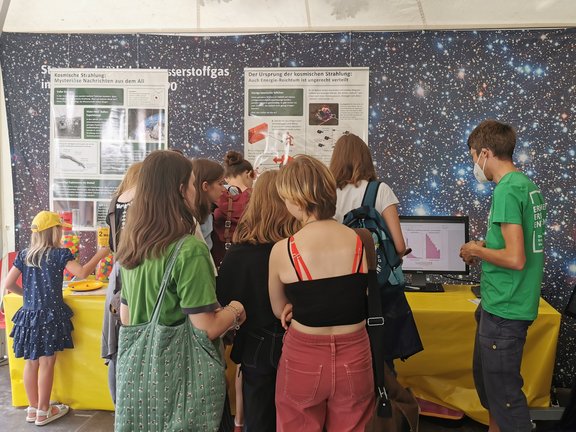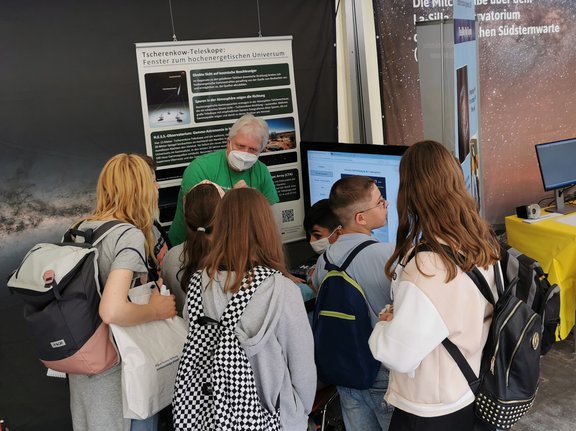What do two dice have to do with the acceleration of charged particles in the universe? How do researchers detect extremely energetic light from distant stellar explosions? Last week, 23,000 visitors were able to explore these and other questions at the Explore Science in Mannheim's Luisenpark! The "Explore Science" science experience days have been organized annually by the Klaus Tschira Foundation since 2006 and are aimed primarily at young people of all ages. For 5 days, they can participate in experiments from all areas of natural sciences at various stations.
Once again, the Max Planck Institute for Nuclear Physics participated with several exhibits. In cooperation with the Haus der Astronomie, visitors could learn about astronomy at five different stations. Here, children were able to discover the laws of statistics in an experiment developed by MPIK staff and learn about the acceleration of cosmic rays in supernovae. With the help of two dice and 1700 small rubber balls, the probabilities for specific throw results were determined.
At another MPIK-internal exhibit, young scientists could compete in a computer game for the detection of gamma radiation. In this game, as many detector images as possible had to be correctly assigned to events due to gamma quanta or other ionization events in the atmosphere within a short period of time.
Both setups were maintained by MPIK scientists, who enthusiastically answered the many questions of the young and older visitors.
We look forward to participating again next year at Explore Science in Luisenpark - this time on the topic of mathematics!

